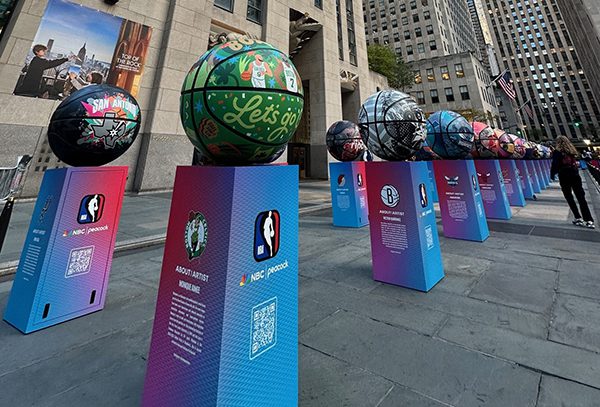DMers and Net heads try to warm up to one another
Not long ago during a presentation at a direct marketing conference, the young CEO of an Internet company explained to the audience that the Internet was all about lifetime value. He then felt compelled to explain what lifetime value is – this to an audience of people who not only invented the concept but have been dealing with it for 25 years.
Clearly, DMers and Internet marketers have much to offer one another. They have also shown that they can irritate one another as they come into increasing contact.
Direct marketers, for example, sometimes view their Net counterparts as arrogant. They are also envious because e-commerce Web sites like Amazon.com take in millions from Wall Street, with no sign of profits on a very distant horizon.
Net people, on the other hand, don’t want to think of themselves as direct marketers – the phrase is as musty to them as an old Sears, Roebuck catalog.
“Clearly we’re seeing some cultural differences,” says H. Robert Wientzen, chairman and CEO of the New York-based Direct Marketing Association. “If nothing else the Web is a much younger group of people. But it’s staggering to me to see how the cultures are coming together, and how fast. A year ago people questioned why direct marketers were involved in the Internet, and now the assumption is that the Internet is about direct marketing.”
Indeed, the main reason the phenomenon even comes up is that, in the great debate over whether the Internet is a branding or direct marketing medium, the DMers have clearly won. Excite CEO George Bell has called direct marketing the sleeper “killer app” of the Internet.
“Last year, you had Internet people wanting to be ad agencies,” adds Keith Wardell, president of Shop2U.com, Fairfax, VA. “This year they want to understand direct marketing.”
“It’s the hottest topic of conversation right now,” says Ben Isaacson, acting executive director of the Association for Interactive Media (AIM), Washington, DC, which was acquired by the Direct Marketing Association last year. “More and more of the members who are joining AIM are traditional direct marketers, many of whom are looking to partner with Internet people. My job is to provide services, to see that the culture gap decreases.”
Some say the gap is exaggerated.
“I’m not experiencing a lot of clashing,” says George S. Weidemann, chairman of both Grey Direct Marketing Inc. and the DMA. “There’s jealousy sometimes. The direct marketers feel a little left behind.”
And observers see many similarities among the two groups. “The Internet has always been about bringing people together in a community of sharing,” says Rosalind Resnick, president of e-mail list company Net Creations, New York. “The list business is really the same kind of thing. Only one list manager can win the bidding, but the other one is going to come to the winner and say, `I’d love to broker that list.’ No matter who wins, each of us can still get a piece of the action.”
Weidemann says his agency is filled with young Internet types who didn’t know they were doing direct marketing: “They don’t think of it that way, frankly,” he points out. “They’re redefining direct marketing in their own way and in their own space. They have a way of owning it without needing to believe that they’re direct marketers.”
Harry Gold, vice president of new media at DM agency Wickersham Hunt Schwantner in Boston, says he didn’t know he was doing direct marketing when he ran his own online agency, Interactive Promotions. Then in April 1998, he joined DM agency Berenson, Isham & Partners, which has since been bought by Wickersham. “I walked in the door at Berenson and said, `Ah, this is what I’ve been doing,'” he comments.
It became even clearer a short time later. “When I started viewing conversion as more important than click-throughs, that’s when I started viewing myself as a direct marketer,” says Gold.
One-Way Only?
Though it’s rare to find Internet people going to DM firms, a handful of direct marketers have made it big in the online world. They include Jan Brandt at America Onlineand Jerry Shereshewsky at Yahoo! (who came from Young and Rubicam by way of Yoyodyne). Regina A. Brady, former leader of Acxiom/Direct Media’s interactive group, was scheduled at press time to join Toronto-based e-mail marketer Media Synergy Inc. as president of new business development and strategic partnerships. Perhaps the most spectacular example is Jay Walker, founder of Priceline.com.
Clearly, several large direct marketers “get” the Internet in a major way. These include Fingerhut, L.L. Bean, Lands’ End, Eddie Bauer and SkyMall. 1-800-Flowers liked the Internet so much that it added “.com” to its name. (It probably did this to boost its stock price after its IPO, a plan that appears to have been unsuccessful – the stock isn’t doing well.)
Resnick wears two hats – those of direct marketer and Internet specialist. After writing books and articles about computers, she became interested enough to start her own Web site development company, which morphed into an e-mail list business.
“Before we even knew we were in the direct marketing business, one of the problems we needed to surmount was a little list of 30,000 Web developers [which Net Creations was compiling],” Resnick says. “But since we were not Yahoo! we didn’t get a lot of traffic to our site. We realized we didn’t have to be content with just our own list. We could become a list manager and broker and [the Web sites] could be the list owner.”
And what was her DM education? Says Resnick: “I used to call Steve Sutton [of Ziff-Davis] every day and ask him question after question until he kicked me off the phone. We subscribed to all the trades. We joined the DMA and went to all the conferences. The position we took from the beginning was we weren’t like Amazon.com or Barnes & Noble saying, `We’re the future of the DM industry and we’re gonna run you off the road.’ We were aware from the beginning of how much we didn’t know.”
Experts say that direct marketers offer Internet marketers discipline, an understanding of long-term customer service and knowledge of how to make offers and returns on investments, says the DMA’s Wientzen. In return, Internet marketers are bringing direct techniques to wider industries, such as the mortgage and pharmaceuticals businesses.
“They’ve brought a whole new vision of customer communications to direct marketers,” adds Ron Jacobs, president of Chicago DM agency Jacobs & Clevenger. “We’ve always viewed customers as part of a database. The Net folks look at it from a community perspective. It’s warmer and fuzzier.”
Overcoming Stereotypes
Sometimes the two sides must overcome stereotypes about each other. When the board of the Washington, DC-based Internet Alliance voted to be acquired by the DMA in May, “there was some concern about the baggage that would come with being connected to the DMA because it’s old school,” says Regina Brady, who also is an IA board member. “There was concern that our agenda might not be totally in sync. In the end we decided we had the same goals in terms of commerce on the Internet.”
Adds Jeff Richards, executive director of the Internet Alliance, “Some Internet people were confused by the DMA’s acquisition of IA, but a lot of businesspeople said it made complete sense.”
Some of the cultural differences are just that – cultural. They even include decor. “If you want to know the difference between the two groups, go to the DMA’s offices and then go to our offices two blocks away,” says AIM’s Isaacson. The DMA offices are tan, old wood. There’s no color. We have very splashy colors here. In my office I have a big blue Disney-like cabinet I bought from Ikea. The garbage cans are neon. We don’t have desks, we have tables with filing cabinets. We want to emulate the Internet companies.”
Such differences are most noticeable at trade shows. Internet events typically have more people in the hallways than in the sessions; direct marketers are more interested in the panel discussions. “Internet people like to network,” Isaacson says. Direct marketers are much more likely to wear ties, and that may be theleast of the sartorial differences. DMA name tags always had a clip, but now the group also provides a string to hold the badge around one’s neck because so many Internet people wear T-shirts, Wientzen says.
An even bigger difference is in how the two sides think of time. Internet time is a lot faster than direct marketing time.
“At Fingerhut there was a challenge to bring that change in mentality,” says Jane Westlind, who left the cataloger late last year to become Net Perceptions’ director of e-commerce solutions, managing e-mail marketing campaigns. Direct marketers are “still taking a methodical approach. They need to learn that they need to take more risks.”
That difference extends even to conference planning.
Wientzen says the DMA has long planning processes, six months to a year, for events while Internet people will do it three months from the conference date.
“On the negative side, when they schedule quickly the practical issues don’t get ironed out,” he says. “On the other hand, they can do it faster and with more flexibility. The fact that the Internet provides results so quickly creates a culture where things get changed a lot.”
But faster isn’t always better. “The traditional direct marketers tend to be more rigorous,” says Jerry Shereshewsky of Yahoo!. “The Web guys are still talking the talk but not walking the walk. They’re not doing the kinds of rigorous stuff in terms of testing and analysis that’s the bread and butter of direct marketing. It’s changing fast, but it’s starting from a base of zero.”
Opting to Disagree
Without question, the biggest clash between the groups is each’s attitude toward opt in and opt out (and by extension, privacy). Interneters are adamant that marketing online will always require consumers to opt in to receiving commercial messages. Not only that, they are certain that this policy will migrate to the offline world. But direct marketers are just as sure that Web marketing will eventually go opt out – the system that they’re used to in mail and phone marketing – especially because it’s so difficult to prospect with opt in.
“We are truly kinsmen to a point, but when it comes to this it’s where we’re not together,” says Ron Jacobs of Jacobs & Clevenger. “In the Internet space, a lot of people are losing money with opt in. In direct marketing, a lot of people are making money with opt out.”
Says Weidemann: “Internet purists say [notice, opt out and suppress] is no good because to first get the opt out you have to spam them. My own view is that we’ll find the notice, opt out and suppress model is a much more economically viable model. A pure opt in model is a little bit pragmatically and commercially unrealistic.”
Another difference, one connected to the opt-in/opt-out debate, is the difference between what Yoyodyne founder Seth Godin calls “interruption marketing” and “permission marketing” (the latter, the title of his book). To the Young Web Turks, the Internet is all about permission; to traditional advertisers and direct marketers, interruption.
“The beauty of direct mail is that it is proactive,” says Weidemann. “It does cause you to look at it and deal with it. It’s intrusive, and Seth rails against that. But a great deal of marketing and selling depends on intrusiveness. I see the future as a mixture of active and passive.”
Despite these very real differences, there’s one thing everyone agrees on: The two cultures will eventually blend into one. The only people who disagree are those who say that, essentially, the two worlds have already merged.



